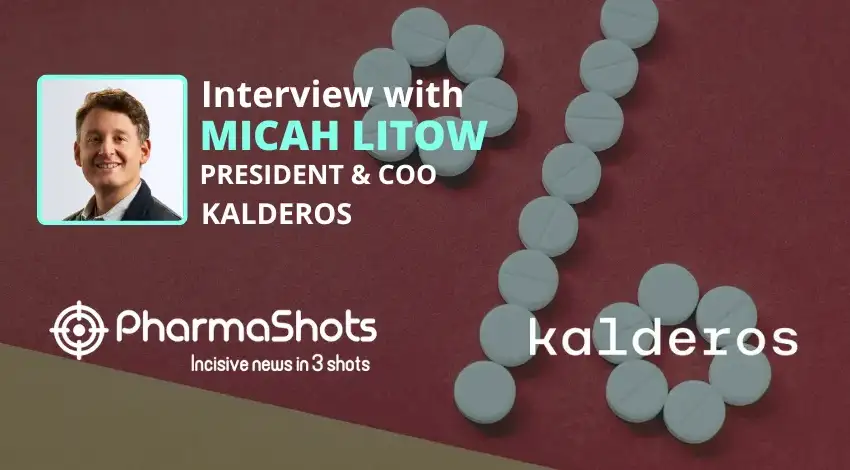Establishing Safe Treatment: Dr. Robert Rifikin from Rocky Mountain Cancer Centers in Conversation with PharmaShots
Shots:
- There is an average lifetime risk of getting multiple myeloma of about 1 in 103 men and 1 in 131 women in the United States
- Treatment of multiple myeloma using fourth-line therapy like teclistamab can induce issues like cytokine release syndrome (CRS) and neurotoxicity
- Today, at PharmaShots we have Dr. Robert Rifikin from Rocky Mountain Cancer Centers, shedding light on MajesTec-1 study that explored patients with CRS and delved into finding ways to decrease CRS and ICANS, resulting from bispecific antibodies treatment
Saurabh: Before we begin, PharmaShots would like to commend the myeloma community for their hard work and dedication in the MajesTEC-1 study. Can you tell us about the MajesTEC-1 study in a little detail?
Robert: The MajesTEC-1 study was published in the New England Journal of Medicine but the OPTec trial is designed to build on the findings of MajesTEC-1 which helped get teclistamab approved by the Food and Drug Administration (FDA) as fourth-line therapy for multiple myeloma. However, when a bispecific antibody like teclistamab is approved, it does carry the additional issues of cytokine release syndrome (CRS) and neurotoxicity in the form immune effector cell-associated neurotoxicity syndrome (ICANS). We could go back and look at MajesTEC-1 in which some of the patients had CRS and explore their treatment.
The whole design and premise behind OPTec is to see if we can greatly decrease, if not eliminate, CRS and ICANS so that this will be very safe and relevant easy to give in a community setting or a setting that didn’t have much exposure to bispecific antibodies.
In this study, we’re following the FDA label exactly for teclistamab and the intervention that we’re going to make is a prophylactic treatment to try and prevent or delay CRS. This strategy will be to employ a premedication utilizing tocilizumab which is an (IL)-6 blocker known to be very effective in the treatment of CRS. In addition there will be usual premeds of Tylenol and Benadryl and some corticosteroids but it’s our hope by using tocilizumab prophylactically that we can prevent or greatly decrease CRS.
What is unique about this target learning about teclistimab is it’s a bispecific antibody with a BCMA target and this class of drugs is known to produce hypogammaglobulinemia and have an increased risk of infection. Thus, one of our other endpoints will be when you’re immunoglobulin G (IgG) level falls below 400, you’ll be given intravenous immunoglobulin to try and prevent infections.
Saurabh: How does this approach of Tec as personalized weight-based dosing increase efficacy vs. standard protocols?
Robert: The way teclistamab is approved is via weight-based dosing and the way to look at it is from an economic standpoint as well. As you know with many of other drugs, depending on the weight, the amount could increase and when it’s needed to use extra vials, it becomes very costly.
This way of dosing is actually pretty simple and straight forward, with the weight likely calculated only once and used as you go through the first step of doses and then if the patient’s weight changes significantly when you get beyond Cycle 2, you can start to make other adjustments.
Saurabh: Did you encounter any challenges in the administration of SUD in the OP setting?
Robert: When you look at how to dose teclistamab, there’s a day one, day four, and day eight as the full treatment dose which are really considered the step-up dosing (SUD). With each one you get successively more exposed to the teclistamab and it’s administered by a subcutaneous injection, it’s actually a very, very small volume.
Challenges really speak to all of cellular therapies, especially CAR-T’s and bispecifics, in that they carry the well-known complications of CRS and neurotoxicity in the form of ICANS, that requires training all stakeholders. What we like to do at our practice is, if there’s a new drug, it’s a great time for an all-office meeting where the front and back office, pharmacy nurses, APP’s, lab techs each learning a bit about the drug, how the care plan will go and how the work flow will go. It’s a very cohesive team and when people see things they know, whether it’s the correct codes, how you document administration, or more importantly, how you correctly perform assessments for CRS and ICANS. We routinely call patients twice a day if they’re out of the hospital and caregivers are instructed in the use of pulse oximeter, blood pressure cuff, and a thermometer, all of which can be used in various ways to predict when CRS is going to start and you can catch ICANS very early and treat them.
Saurabh: Can you tell us about the primary and secondary endpoints of the study, and how they were measured?
Robert: This is a little bit of an unusual study because we all know how active teclistomab is and a little bit about CRS, but the primary focus of this study is safety. So it’s not all the traditional endpoints of progression free overall survival, but we’re looking at safety and infections and monitoring for the incidence and severity of CRS and ICANS. We’re then going to conduct extensive PKPD to ensure that giving prophylactic tocilizumab doesn’t impair the efficacy or change the metabolic profile of teclistamab.
Saurabh: Can you tell us why the patients with rapidly-progressing multiple myeloma, CNS involvement active infections or contraindication to tocilizumab were excluded?
Robert: If you look at all of those things, one thing you have to be careful of is after you’ve had four or more lines of therapy to satisfy the FDA label, this is a very sick population and we don’t really know very much about what this drug will do in the CNS (and CNS myeloma is actually quite rare.) If it’s rapidly progressing during screening, sometimes the patient’s disease is too aggressive, and they just would not be well-served by going on a trial like that. In this population, we don’t have really pre-select, so that’s a relatively small group of people that you would exclude.
Saurabh: How is CRS monitored in patients and what specific measures are in place to deal if it occurs despite the administration of prophylactic tocilzumab?
Robert: The trick to managing CRS is to recognize it early, and then following the protocols. There are actually applications you can open up on your phone which will tell you exactly what to do though that’s not our preferred method – we instead education our staff, the patients, and their caregivers. With an educated caregiver, they can identify, for example, how ICANS would present very early-on – perhaps with mild confusion, slurring of speech, etc.
Additionally, everybody gets blood pressure cuff (and know how to use those,) pulse oximetry and thermometers, because oftentimes CRS can even present before the fever. With a fever, we then have to be reasonably quick to intervene, even if the first intervention is just steroid and then moving on to other, stronger measures. Though in this study, we don’t think we’re going to see very many high-grade CRS because of the prophylactic tocilzumab administration.
Saurabh: Is there any specific reason for administering tocilzumab 2-4 hours before SUD 1 teclistamab?
Robert: We do that along with some of the premedications to make sure all of the appropriate receptors are saturated, and all of the potential cytokine storm is blocked.
Saurabh: What are the next steps following the study?
Robert: The study is being conducted in several phases. Due to regulatory oversight and safety endpoints, after the first five patients were treated, there is a very quick data review committee, and we were then able to accrue the next five which completes the PKPD cohort.
Very soon after two planned data review committees, we’ll open the study up to all of our centers and accrue the remaining 40 patients. Following that, we’re going to take the same approach with talquetamab, which has a uniquely different set of toxicities in addition to CRS.
Image Source: Canva
About the Author:

Robert Rifkin
Dr. Rifkin is a board-certified medical oncologist and hematologist specializing in malignant and benign hematology, treating blood cancers and disorders. He has an advanced sub-specialty expertise in coagulation disorders, multiple myeloma and biosimilars. Dr. Rifkin practices evidence-based medicine and follows National Comprehensive Cancer Network (NCCN) guidelines for cancer treatment.
Related Post: Redefining Care: Gunjan Sharma from The US Oncology Network in Conversation with PharmaShots


